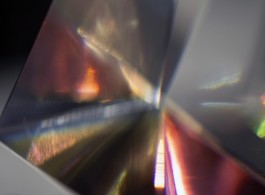In Case My Mind Is Changing
Simon Lee Gallery
Simon Lee Gallery is pleased to present an exhibition of new photography, together with some models in 3D, by Josephine Pryde, her second to be held in the London gallery.
Photography
Carvings were made into the surfaces of rocks, across what was later Europe.
3D Models
She held a tampon between her finger and thumb, and an image popped into her head, of the chemist in Chancery Lane where she had bought the box of tampons.
Memory
If you take a course in Photoshop, the teacher may talk to you about Photoshop and memory. It could be the very first thing the teacher says. It’s thrilling. Photoshop remembers the pixels and where they are. It’s a map. The first verb the teacher uses to introduce Photoshop is ‘to remember’. Not the verb ‘to depict’, ‘to demonstrate’, ‘to represent’, nor ‘to show’.
I think of my body (again) (after the computer). How it takes memory.
The computer. The rocks. The 3D object. How they all take memory.
Taking up memory.
It takes more memory than Illustrator, Photoshop. Because Illustrator works with vectors, and remembers outlines. What is it that Photoshop remembers, if it is not outlines?
Josephine Pryde is an artist known primarily for her work with photography, though she often presents work with sculptural elements. Pryde learns from different photographic conventions, for example from publicity or advertising images, where seductive and highly staged, high resolution images evoke and respond to desire. She draws on visual
languages, responding to ideas and larger conceptual frameworks such as the history of photography and the moving image, through details, references, or the juxtaposition of different works.
For this new exhibition, Pryde has been considering capacities of memory, over time, and in relation to photography and other graphic media. Her text, ‘Constable’, included in the book ‘Anarchic sexual desires of plain unmarried schoolteachers’, ed. Chris McCormack, Selected Press, 2015, introduces some of the ideas she is working on here. When do humans’ minds and bodies expand into different technologies? Where can they withdraw? When do you have periods? Does the change in mind suggested by the exhibition title mean a change of opinion, or something else?




